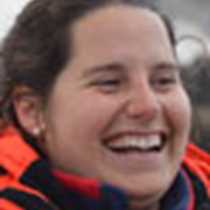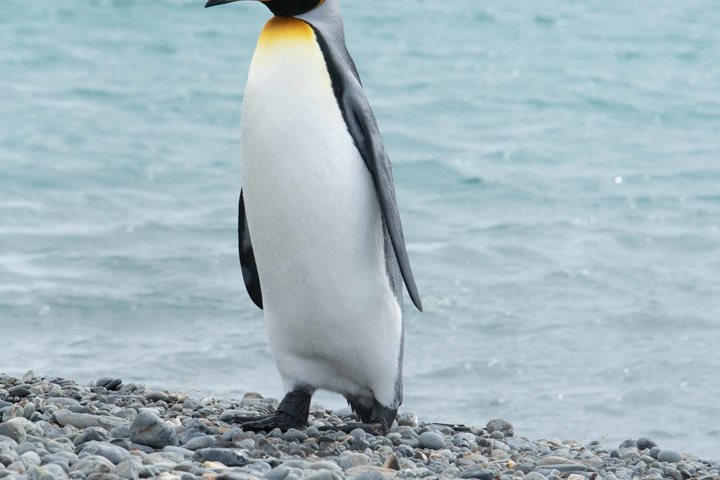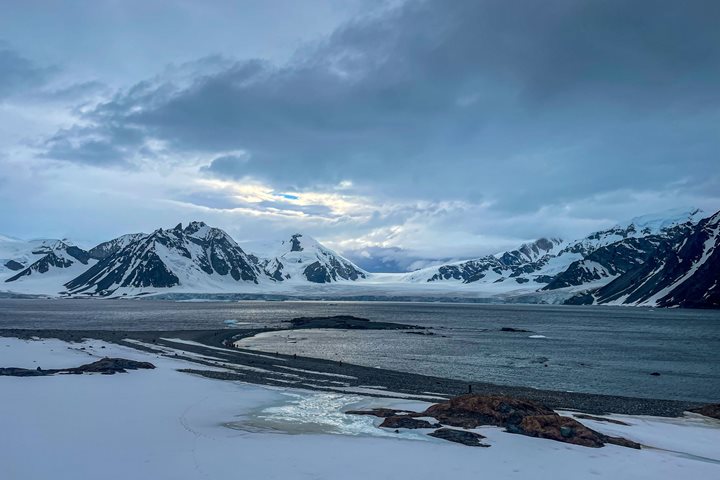We sailed along the Beagle Channel, a strait in the Tierra del Fuego archipelago, on the extreme southern tip of South America between Chile and Argentina. This channel was named after the ship HMS Beagle during the first hydrographic survey of the southern part of South America. Captain Fitz Roy and his team charted this passage during their voyage from 1826 to 1830.
Early in the morning we could already see Pia Glacier surrounded by impressive rocks and mountains covered in clouds. These mountains are part of the Darwin Range, named after the naturalist Charles Darwin, who was part of the second hydrographic survey expedition on HMS Beagle. The sky started to clear as we set up our operations, which was to be our last day in Patagonia, with the most perfect conditions.
With majestic scenery surrounding us we explored the fjord in kayaks. Clear blue skies, dark green Nothofagus forests, and high waterfalls reflected on the glassy still glacial waters.
To explore further down the fjord, we went on a Zodiac cruise to one of the most fantastic glaciers views. Perfect lighting, beautiful mountains, and gorgeous ice formations. The sunlight was reflecting on the glacier and the snow-covered mountain tops. Among the species present were some kelp gulls, imperial cormorants, and South American terns.
Onboard we learned about the life history of a snowflake, an Introduction to glaciers of Patagonia and Antarctica by our naturalist Eric Guth. Allyssa Adler, our undersea specialist, shared with us the wonders of kelp and the kelp forest ecosystem.
To proceed on our journey to Antarctica, it was time to clear out from Chile and say our goodbyes to South America. On our way to Puerto Williams, we had spectacular views of the fjords, many glaciers, and the Cordillera Darwin. The Darwin Range extends in a west-east direction from the Monte Sarmiento to Yendegaia Bay and to the north by the Almirantazgo Fjord and the Beagle Channel to the south. It is part of the Andes Range and includes the highest mountains in Tierra del Fuego, with elevations reaching over 2,000m (6,600ft).
Here’s how Darwin described on his first sight of a glacier when they reached the channel in 1833: ”It is scarcely possible to imagine anything more beautiful than the beryl-like blue of these glaciers, and especially as contrasted with the dead white of the upper expanse of snow.”
What a fabulous day.







